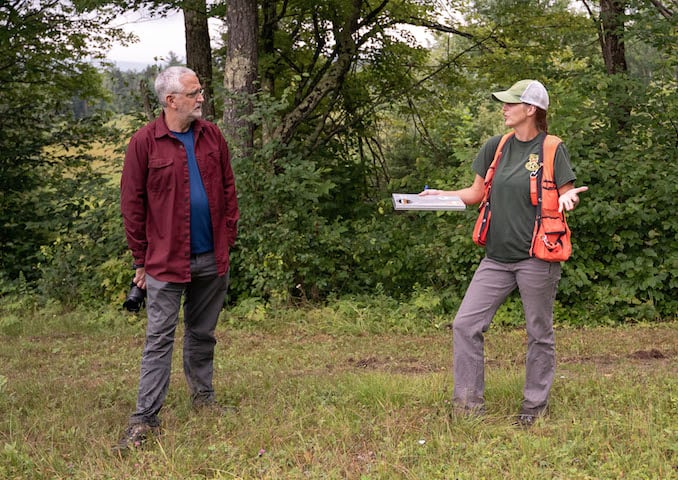
MONTPELIER, Vt. – The Vermont Fish & Wildlife Department is encouraging outdoor enthusiasts to include the 2021 Vermont Habitat Stamp among their donations, continuing to build on the fund’s momentum in 2020.
“The first few years of the Vermont Habitat Stamp program have been a success and 2020 continues that trend,” said Louis Porter, commissioner of the Vermont Fish & Wildlife Department. “Since 2015, and thanks to the many donors to the program, the Vermont Habitat Stamp has contributed to the conservation of several thousand acres of land, restoration efforts on numerous streams and rivers, and the removal of dysfunctional dams for fish passage.”
Thanks to the generous donations last year from Habitat Stamp supporters – the highest number of donors and donations since the program began in 2015 – the Habitat Stamp raised more than $241,968 in 2020 and used that money to leverage more than $490,802 in federal funds for habitat conservation in Vermont. The new 2021 stamp is available on the Fish & Wildlife Department’s website and is also available as a voluntary add-on to hunting or fishing licenses when purchased online at www.vtfishandwildlife.com.
Habitat Stamp funds helped the department complete a variety of projects with conservation partners in 2020 to improve streambank and shrubland habitat on 70 acres in Charlotte and Hinesburg. With an eye on golden-winged warbler, American woodcock, deer, and other species that depend on streambank parcels and shrublands, these projects removed invasive plants and planted native shrubs that provide food and cover for birds and other wildlife.
The funds also enabled the department to assist landowners on 45 properties covering more than 7,165 acres to improve wildlife habitat for songbirds, bats, bear, deer, moose, and other wildlife, with benefits to pollinators, amphibians, and more.
With Habitat Stamp support, the department worked with landowners to protect trees along streams and rivers, reduced invasive knotweed on state lands along the Little River and White River, and continued floodplain restoration on a 35-acre department-owned streambank parcel along the White River in Bethel.
Habitat Stamp funds were used at the department’s Wildlife Management Areas throughout the state to mow grasslands benefiting bird habitat, maintaining wildlife openings, controlling invasive plants that impact native shrub habitat, releasing fruit and nut producing trees, and restoring riparian habitat by planting native trees and shrubs.
On Aug. 4, 2020, the Town Farm WMA in Shrewsbury was dedicated as Vermont’s 100th WMA as the department leveraged its Habitat Stamp program to assist local supporters in raising funds to acquire the property which is now part of a large forest block providing habitat connectivity for wildlife in south central Vermont.
“The Fish & Wildlife Department is uniquely positioned to conserve habitat in Vermont because we can leverage every dollar donated for several additional dollars in federal funds,” said Porter. “Even a small donation makes a big difference for habitat conservation. As forests and fields in Vermont yield to development, the Habitat Stamp will allow us to continue to protect the critical open spaces that Vermonters enjoy.”
The 2020 Habitat Stamp Annual Report highlighting the conservation work done through the program is available online at www.vtfishandwildlife.com. Matching funds for habitat projects sponsored by the stamp have come from the U.S. Fish & Wildlife Service Wildlife and Sport Fish Restoration Program.